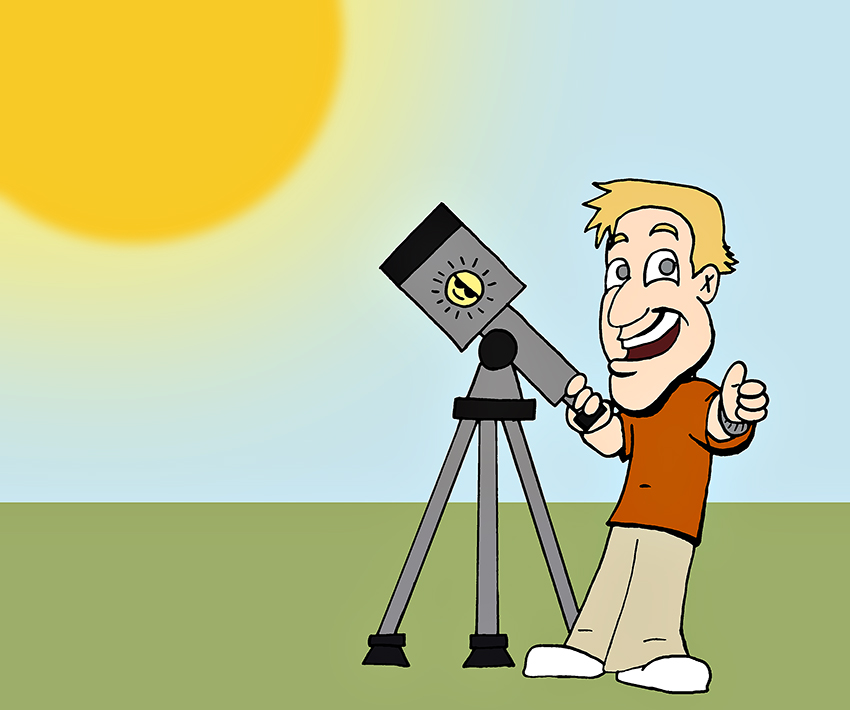A group of UT astronomy fans will set up a telescope on Sept. 10 and invite people to do what generations of parents have warned their children not to — look directly at the sun.
Telescopes by the Tower is a program created by Melissa Morris, co-president of the Astronomy Students Association. Twice a month, ASA members set up sun-safe telescopes around campus or around Austin. The program began last school year, but Morris said that was more of a test run and the program is ready to grow more this year. This summer, the astronomy department provided Telescopes by the Tower with funding for a new specialized solar telescope.
“[Telescopes by the Tower] is really small right now, but with more people joining, we’ll be able to get the word out more,” Morris said. “And now we have our new telescope, so we’re hoping to attract a much bigger audience. I’m really looking forward to it, it’s going to be an exciting semester.”
This new telescope, the H-alpha telescope, will allow viewers to see more features on the face of the sun and will be ready for use this semester.
“The ones that they’ve been using, we take just a regular nighttime telescope and we use a special filter on it that allows us to safely view the sun,” said Lara Eakins, astronomy education and outreach coordinator. “This one is built to look at the sun. It allows us to see some different parts of the sun than you would see using a nighttime telescope.”
The solar filters on the other telescopes block out most of the light from all wavelengths and can only be used to see sunspots. However, this new telescope allows viewers to look at the sun on an entirely different wavelength and shows the sun’s lower atmosphere, solar flares and solar filaments, huge looping structures on the sun created by gas held by the sun’s magnetic field lines.
“Whenever you think of looking at the sun, and you see all of these really cool images online with things coming out of the sun, that’s what we’re going to be able to see through this H-alpha filter,” Morris said. “We have two different views of the sun that are going to be completely different. That’s going to make Telescopes by the Tower even more exciting.”
Morris said that because the sun’s appearance changes rapidly, there is always something new and interesting to see.
“It’s really cool to see how the sun changes over time, because it’s definitely not the same,” Morris said. “It’s not something where you just go once and say you did it and never have to go again. You can go all the time and you can keep looking at the sun and you see all of these different things happening on it.”
While most astronomy outreach programs are focused on schoolchildren, Morris said that one of the goals of Telescopes by the Tower is to reach an older and wider audience and get adults excited about astronomy.
“It just instills this sense of wonder and imagination and makes people think about [the sun] a little more,” Morris said. “It really puts things into perspective. You can just look at [the sun], and that’s what is allowing us to live here. It’s a really humbling experience.”





















